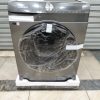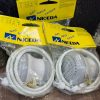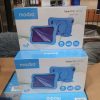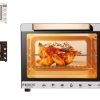Digital Airspeed Sensors for UAVs and Drones
Digital Airspeed Sensors are critical for drones that need precise navigation and stable performance. These small but powerful devices measure airflow through a pitot tube and send digital signals to the autopilot. With this information, UAVs can calculate true airspeed, improve efficiency, and avoid risky stalls during flight.
How Digital Airspeed Sensors Improve UAV Performance
Unlike analog versions, digital sensors provide cleaner and more reliable data by using I²C or CAN bus communication. This ensures that autopilot platforms like PX4 and ArduPilot can make accurate adjustments to throttle and control surfaces. The result is smoother flights, even in challenging weather or high-altitude conditions.
Benefits of Using Airspeed Sensors in Drones
- Enhanced Flight Safety – Reduces the risk of stalls and instability.
- Accurate Control – Autopilot systems perform more effectively with reliable inputs.
- Energy Savings – Helps drones fly at efficient speeds, conserving battery or fuel.
- Versatile Use – Essential for mapping, agriculture, inspections, and delivery UAVs.
Integration with UAV Systems
Most flight controllers, including Pixhawk and Cube Orange, are compatible with digital airspeed sensors. Once connected, they deliver real-time speed data to the onboard system and ground control software. This allows operators to monitor performance and make better decisions throughout every mission.
Final Thoughts
Whether for professional surveying or agricultural drones, digital airspeed sensors provide the accuracy, safety, and efficiency that UAV operators depend on. Investing in one ensures more reliable and effective flights.




